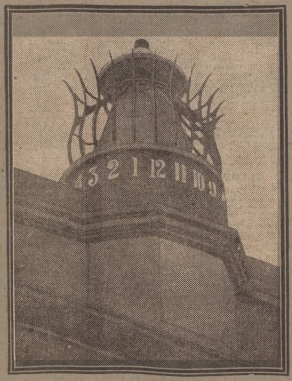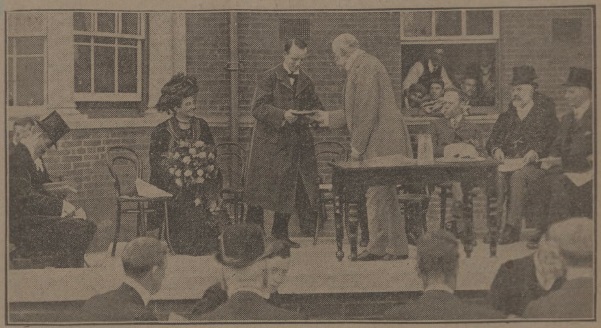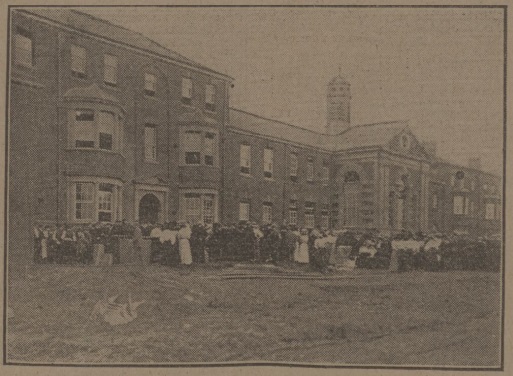If it’s bewildering today to say exactly where Wrenthorpe starts and Kirkhamgate, Alverthorpe, Newton Hill or Outwood ends, it’s no easier for people tracing their family history and finding ancestors living in Alverthorpe-with-Thornes or Stanley-cum-Wrenthorpe.
The dividing line of those two ancient townships was the Foster Ford/Balne Beck – right in the middle of modern day Wrenthorpe. The area’s informal but widely used name ‘Potovens’ referred to the densely populated area in the village centre. Under the old boundaries, Silcoates, Jerry Clay Lane, Brandy Carr and Kirkhamgate were all part of Alverthorpe-with-Thornes.
When the Stanley Urban District Council was created in 1899 its western boundary stuck to the old township divide. During the following year Wakefield City Council incorporated much of Alverthorpe, leaving Silcoates, Jerry Clay Lane, Brandy Carr and Kirkhamgate as something of a backwater in the Wakefield Rural District Council. The area wasn’t absorbed into Stanley UDC until 1935.
Here’s a couple of confusing articles about Alverthorpe and Kirkhamgate from the WW1 era.
Yorkshire Post and Leeds Intelligencer
Tuesday 13 July 1915
ALVERTHORPE PARISH COUNCIL AND ITS NAME
The announcement that the Parish Council Alverthorpe, near Wakefield have applied for the name the township to be changed to Kirkhamgate does not mean that there is a prospect of the name of the village of Alverthorpe itself being altered. In 1900 the parish of Alverthorpe had an area of 2,481 acres, and a population (according to the 1891 Census) of 4,811, and included Alverthorpe village and several small hamlets, all coming within the area of the Wakefield Rural District Council. The borough of Wakefield then sought to extend its boundaries by the inclusion of the district of the Alverthorpe Pariah Council, and terms were arranged between the two bodies.
The Local Government Board, however, only consented to the addition part of the area, comprising 573 acres and a population 3,631 and including the village Alverthorpe, the added area becoming the Alverthorpe Ward in the borough of Wakefield. At one end of the old district was left an area of 999 acres, with a population of 164 and this became Lupset. At the other end the Alverthorpe Parish Council were left with an area of 909 acres and a population of 1,116 made up of the hamlets of Kirkhamgate, Brandy Carr, Silcoates and Beck Bottom, the first named being the largest. Officially, this small area continued to be known as that of the Alverthorpe Parish Council. As already pointed out, Alverthorpe itself is now part of Wakefield, and it is with the object of getting rid of the confusion of names that the Parish Council have decided to rename themselves the Kirkhamgate Parish Council. Though rather long delayed, the action is considered locally to be a logical outcome of the absorption of Alverthorpe into the Wakefield borough boundary, and it is not thought likely that there will any opposition to the proposal when the Subcommittee of the West Riding County Council inquires into the matter.
Leeds Mercury
Tuesday 27 July 1915
ALVERTHORPE NO LONGER
CHANGE OF NAME DESIRED TO KIRKHAMGATE
Alderman P H Booth and Councillor W Ormerod, representing the County Council, held am inquiry at Kirkhamgate, yesterday, relative to the application of the Alverthorpe Parish Council to change the name to Kirkhamgate Parish Council.
Mr W J Skinner, clerk to the Parish Council, pointed out that in 1900 the Alverthorpe township became part of Wakefield, but the name of Alverthorpe Parish Council remained. The part which was not in the jurisdiction of Wakefield was Brandy Carr, Silcoates, and Beck Bottom. The change of name would be a great advantage, particularly with regard to postal arrangements.
At present when letters were addressed Kirkhamgate, Alverthorpe, they were sent out with the Alverthorpe letters, and were returned to Wakefield to be re-directed Kirkhamgate with the result that sometimes there was a delay of twenty-four hours.
There was no opposition.





